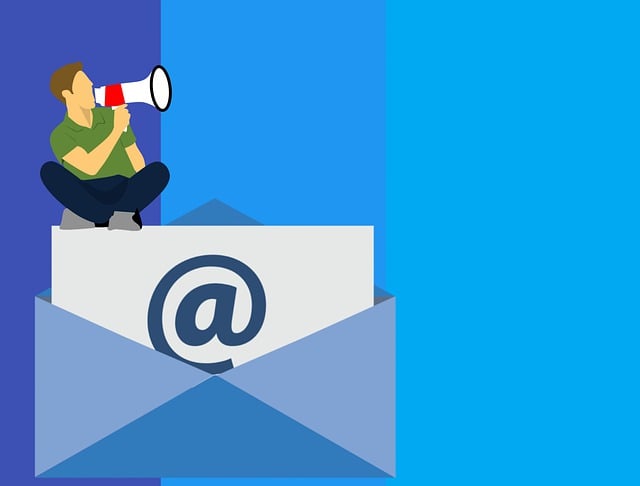Are your B2B email marketing campaigns hitting the mark or falling flat? In today’s data-driven business landscape, it’s crucial to measure the success of your email campaigns to ensure you are getting the most out of your efforts. But with so many metrics to track and analyze, where do you start?
In this article, we will explore the key metrics you need to track in your B2B email marketing campaigns. By analyzing open rates and click-through rates, you can gain valuable insights into the effectiveness of your emails. We will also delve into evaluating conversion rates and ROI, allowing you to understand the true impact of your campaigns on your bottom line.
But it doesn’t stop there. We will show you how to leverage A/B testing to optimize your email campaigns, ensuring you are sending the most impactful content to your audience. And don’t underestimate the power of customer feedback and surveys – they can provide invaluable insights into what is resonating with your target market.
So, if you’re ready to take your B2B email marketing campaigns to the next level, buckle up and let’s dive into the world of data-driven success.
Key Takeaways
- Open rates, click-through rates, and conversion rates are key metrics to track in B2B email marketing campaigns.
- A/B testing can optimize email campaigns by testing different variations of content, including subject lines.
- Customer feedback and surveys provide insights into audience preferences and needs, helping to improve targeting and segmentation.
- Regularly monitoring and analyzing email metrics helps make data-driven decisions for targeting strategies and identify areas for improvement.
Key Metrics to Track in Your B2B Email Marketing Campaigns
To track the success of your B2B email marketing campaigns, you need to keep a close eye on key metrics. These metrics include open rates, click-through rates, and conversion rates. Open rates indicate how many recipients actually opened your emails, while click-through rates show how many people clicked on the links within your emails. By analyzing these metrics, you can determine the engagement level of your audience and identify areas for improvement.
Additionally, tracking conversion rates allows you to measure the success of your lead generation efforts and evaluate the effectiveness of your targeting strategies. Analyzing open rates and click-through rates for email success is the next step in assessing the impact of your B2B email marketing campaigns.
Analyzing Open Rates and Click-through Rates for Email Success
Analyzing open and click-through rates provides valuable insights into the efficacy of email campaigns in the B2B sector. Open rates indicate the percentage of recipients who opened the email, while click-through rates measure the percentage of recipients who clicked on a link within the email. By analyzing these metrics, you can determine the level of engagement and interest generated by your email campaigns.
To further emphasize the importance of open and click-through rates, consider the following table:
| Metric | Definition |
|---|---|
| Open Rate | Percentage of recipients who opened the email |
| Click-Through Rate | Percentage of recipients who clicked on a link within the email |
Analyzing open rates allows you to evaluate the effectiveness of your subject lines and email content, while click-through rates provide insights into the appeal and relevance of your call-to-action. By understanding these metrics, you can make data-driven decisions to optimize your email campaigns and improve their overall success.
Transitioning into the subsequent section about evaluating conversion rates and ROI in B2B email marketing, understanding open and click-through rates is just the first step in measuring the success of your email campaigns.
Evaluating Conversion Rates and ROI in B2B Email Marketing
Evaluating conversion rates and ROI in B2B email marketing allows you to determine the effectiveness and profitability of your email campaigns. Measuring effectiveness is crucial to understanding how well your emails are performing and whether they are driving the desired results. Tracking performance helps you identify areas of improvement and make data-driven decisions to optimize your campaigns.
Here are three key metrics to consider when evaluating conversion rates and ROI in B2B email marketing:
-
Conversion Rate: This metric measures the percentage of recipients who take the desired action after receiving your email, such as making a purchase or filling out a form. A high conversion rate indicates that your email content and call-to-action are compelling and resonating with your audience.
-
Return on Investment (ROI): Calculating the ROI of your email campaigns helps you determine the profitability of your marketing efforts. By comparing the cost of running the campaign to the revenue generated, you can assess whether your email marketing strategy is yielding a positive return.
-
Customer Lifetime Value (CLV): CLV measures the total revenue a customer generates for your business over their lifetime. By understanding the CLV of customers acquired through email marketing, you can assess the long-term profitability of your campaigns.
Measuring effectiveness and tracking performance through these metrics will provide valuable insights for optimizing your email campaigns. Transitioning to the next section, let’s explore how to use A/B testing to further enhance the success of your email marketing efforts.
Using A/B Testing to Optimize Your Email Campaigns
Implementing A/B testing in your email campaigns allows you to optimize and enhance the effectiveness of your email marketing strategy. By testing different variations of your email content, you can gather valuable data on what resonates best with your audience, ultimately driving higher engagement and conversion rates.
When optimizing content, you can experiment with different formats, styles, and lengths to determine which types of content generate the most positive responses. Additionally, testing subject lines can help you identify which ones grab the attention of your recipients and entice them to open your emails.
Analyzing the data from your A/B tests will provide insights into what works and what doesn’t, enabling you to refine your email campaigns for maximum impact.
Transitioning into the next section, leveraging customer feedback and surveys can further enhance your understanding of your audience’s preferences and needs.
Leveraging Customer Feedback and Surveys for Insights
By actively seeking and embracing customer feedback and surveys, you can gain valuable insights into your audience’s preferences and needs, allowing you to tailor your email campaigns to better resonate with them. This feedback-driven approach can significantly improve customer satisfaction and increase the success of your B2B email marketing campaigns.
Here are five ways you can leverage customer feedback and surveys to gain insights:
-
Identify pain points: Customer feedback can help you identify any issues or challenges your audience may be facing, allowing you to address them in your email campaigns.
-
Understand preferences: By analyzing feedback, you can determine the types of content, offers, or promotions that resonate most with your audience, enabling you to optimize your campaigns accordingly.
-
Improve targeting: Surveys can provide valuable demographic and psychographic data, helping you segment your audience and send more personalized and targeted emails.
-
Test new ideas: Customer feedback can serve as a testing ground for new ideas or strategies before fully implementing them in your email campaigns.
-
Measure campaign effectiveness: By analyzing feedback and survey responses, you can track the success of your email campaigns and identify areas for improvement.
By leveraging customer feedback and surveys, you can gather valuable data to inform your email marketing strategies and drive better results. Now let’s explore some tips for improving the success of your B2B email marketing campaigns.
Tips for Improving the Success of Your B2B Email Marketing Campaigns
To enhance the effectiveness of your B2B email marketing efforts, consider incorporating these practical tips into your strategy.
Improving engagement is crucial for the success of your campaigns. Start by segmenting your email list based on relevant criteria such as industry, job title, or company size. This allows you to tailor your messaging and offers to specific recipients, increasing the chances of them engaging with your emails.
Additionally, personalize your emails by addressing recipients by their name and including relevant details based on their past interactions. A/B testing different email elements like subject lines, call-to-action buttons, and email designs can help you identify what resonates best with your audience and optimize your campaigns accordingly.
Finally, regularly monitor and analyze your email metrics, such as open rates, click-through rates, and conversions, to gain valuable insights and make data-driven decisions to continually improve your targeting strategies.
Frequently Asked Questions
How can I track the engagement of my email subscribers beyond open rates and click-through rates?
To track the engagement of your email subscribers beyond open rates and click-through rates, you need to look at additional tracking metrics. These metrics include email reply rates, conversion rates, and unsubscribe rates. By analyzing these metrics, you can gain valuable insights into the level of engagement your subscribers have with your emails.
Monitoring these metrics allows you to make data-driven decisions and develop strategic approaches to improve subscriber engagement and ultimately, the success of your B2B email marketing campaigns.
What are some effective ways to segment my B2B email list for better targeting?
To effectively segment your B2B email list for better targeting, employ effective personalization techniques and prioritize data analysis.
By categorizing subscribers based on industry, company size, or job title, you can tailor your messages to their specific needs and interests. This not only increases the chances of engagement but also enhances the overall effectiveness of your email campaigns.
The key to successful segmentation lies in strategic data-driven decision-making, ensuring that your messages resonate with the right audience.
How can I measure the impact of my email marketing campaigns on overall brand awareness and customer perception?
To measure the impact of your email marketing campaigns on brand awareness and customer perception, you need to focus on key email marketing metrics.
Start by analyzing open rates, click-through rates, and conversion rates to gauge campaign effectiveness.
Track metrics like website traffic, social media engagement, and customer feedback to assess brand awareness.
Conduct surveys and monitor customer sentiment to understand how email campaigns influence customer perception.
Utilize these data-driven insights to optimize your campaigns and enhance overall brand awareness and customer perception.
Are there any specific strategies or best practices for improving email deliverability rates in B2B email marketing?
To improve your email deliverability rates in B2B email marketing, focus on email reputation management.
Start by optimizing your sender reputation, which involves maintaining a clean email list, using double opt-in, and regularly monitoring bounce rates and spam complaints.
Implement authentication protocols like SPF, DKIM, and DMARC to enhance your email authentication.
Additionally, follow best practices such as personalizing emails, avoiding spam trigger words, and segmenting your audience to ensure your emails land in the right inbox.
What are some key indicators that can help me identify email fatigue and prevent subscriber churn?
To identify email fatigue and prevent subscriber churn, you need to conduct email engagement analysis and implement effective subscriber retention strategies.
Look for indicators such as decreased open rates, click-through rates, and overall engagement levels.
Analyze the frequency and timing of your emails, segment your audience, and personalize your content.
Additionally, monitor your unsubscribe and complaint rates.
By continuously analyzing and optimizing your email campaigns, you can reduce email fatigue and retain your valuable subscribers.
Conclusion
In conclusion, measuring the success of your B2B email marketing campaigns is crucial for optimizing your strategies and achieving higher ROI.
By tracking key metrics such as open rates, click-through rates, conversion rates, and ROI, you can gain valuable insights into the effectiveness of your campaigns.
A case study by Company X found that by conducting A/B testing and analyzing customer feedback, they were able to increase their email open rates by 25% and ultimately achieve a 50% higher conversion rate.
By implementing these strategies and continuously improving your campaigns, you can drive better results and achieve your marketing objectives.










